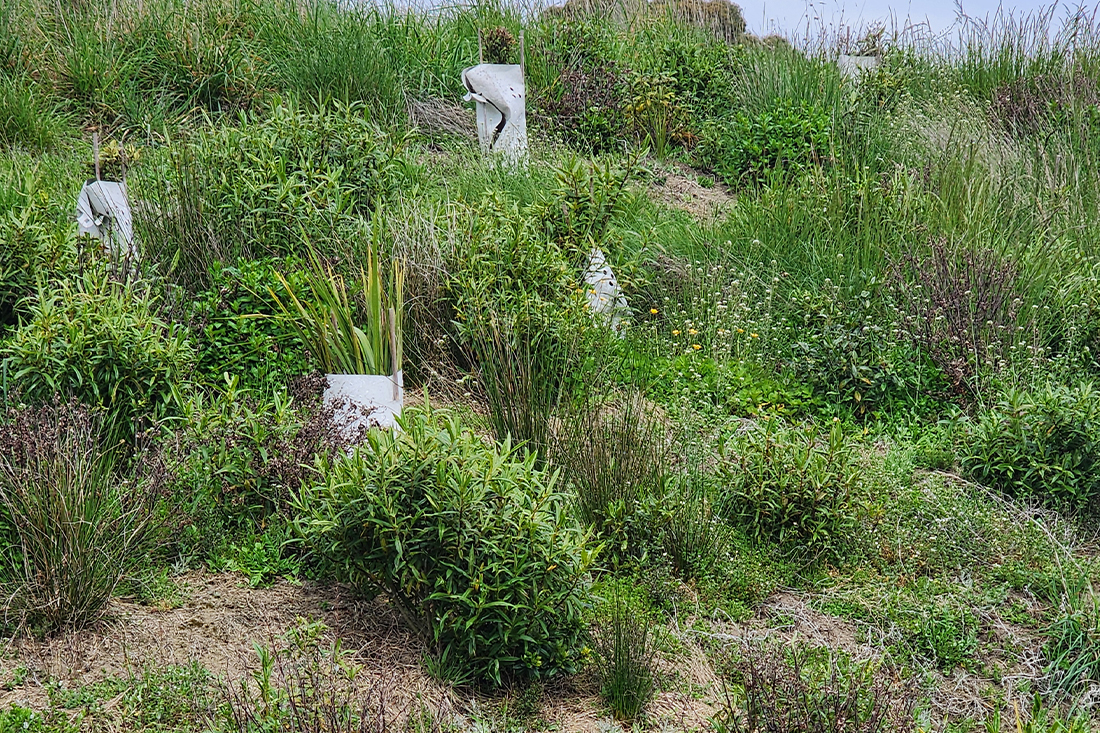South Island farmers Sandra and Chris Campbell improve efficiency and biodiversity on-farm through drone planting trials.
Farmers around New Zealand are working on ways to become more efficient and improve their bottom line, and at the same time reduce their carbon footprint and contribute to the Co-op’s target of a 30% intensity reduction in on-farm emissions intensity by 2030, from a 2018 baseline.
South Otago farmers Sandra and Chris Campbell of Oakwood Hills Dairies have come across an innovation that could be a gamechanger for farmers looking for cost-effective options to improve biodiversity on-farm and lower emissions.
The couple’s 280ha farm includes around 480 cows, several hectares of gullies and critical source areas, forestry blocks, and river tributaries. Since 2018, Sandra and Chris have completed an extensive planting and fencing programme and in 2020 won several Ballance Farm Environment Awards for their environmental and efficiency efforts. Sandra also has a native seedling nursery on-farm.
Eager to improve the property further, Sandra and Chris worked with Otago South Rivercare, Seed New Zealand Natives, and Red Tree Environmental Solutions to trial planting natives in a critical source area on-farm using drones.
“We want to improve the property and increase biodiversity. The goal is to have a recipe at the end that any farmer could follow, like putting in turnips. We chose a gully that is typical of many of the areas on our farm for the trial. It’s a critical source area with all the runoff from the neighbouring paddocks going into it,” Sandra says.
To begin, the project team used a drone to spray herbicide to the gully before native seeds of flax, koromiko, kanuka, mānuka, fireweed, lemonwood, cabbage tree, and Carex secta were sown (again using the drone). Since then the project team has used the drone to spray the gully every four months. The overall establishment cost was estimated to be $10,000 per hectare over three years.
“We’re now two years into a three-year trial. In the gully we now have knee-high natives. Different varieties have struck at different times. The koromiko and fireweed was really quick. The mānuka, cabbage trees and pittosporum are also coming along,” Sandra says.
“We’re really happy with how the drone site has gone. It’s been so successful and we’re keen for others to try it out. I’d love to see more sites like this pop up around the countryside.”
